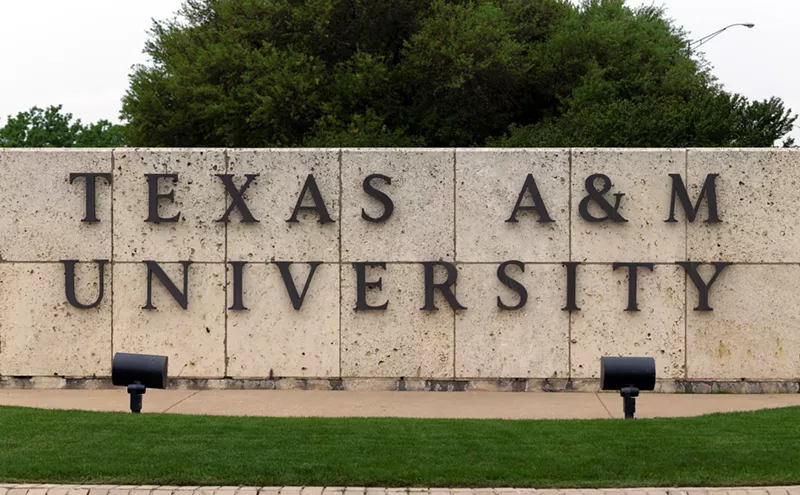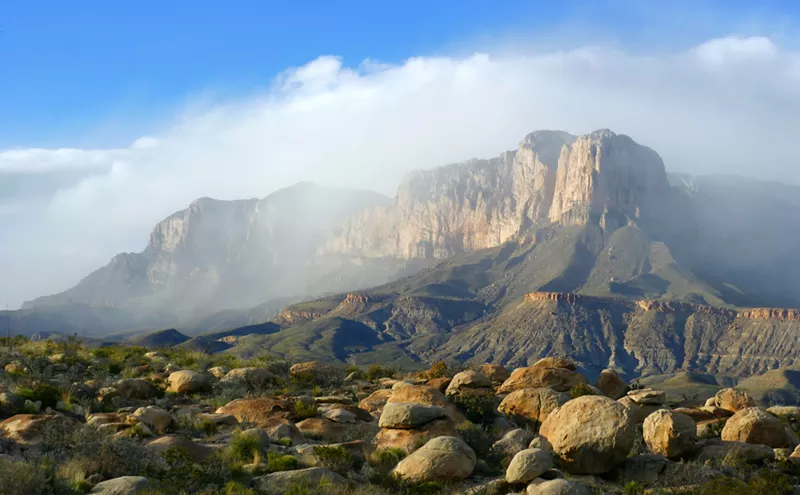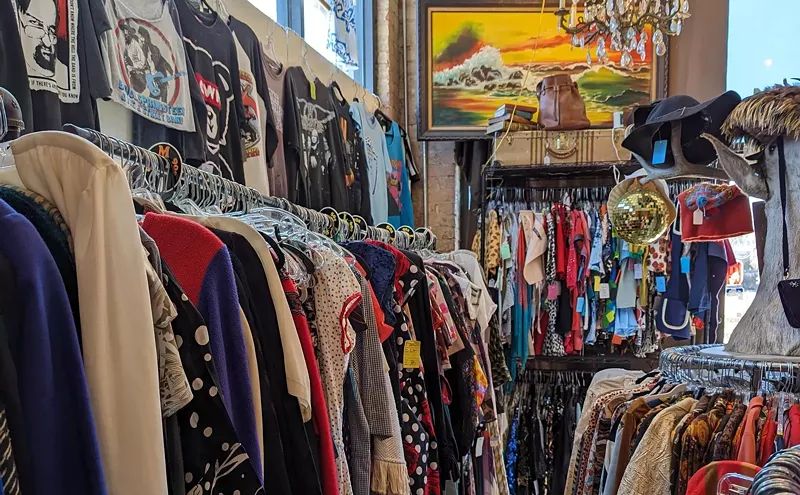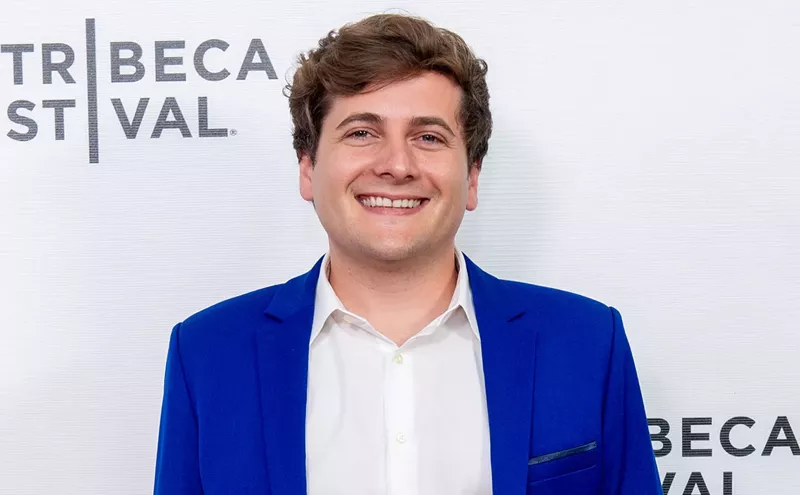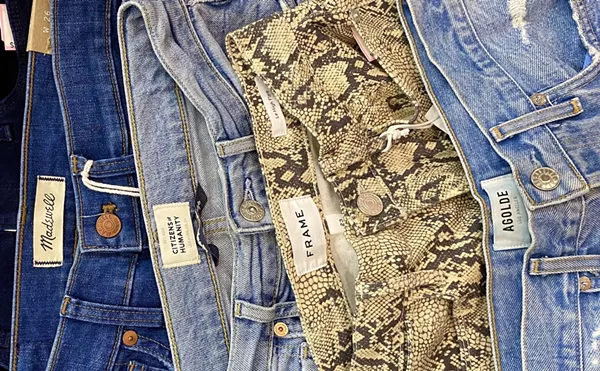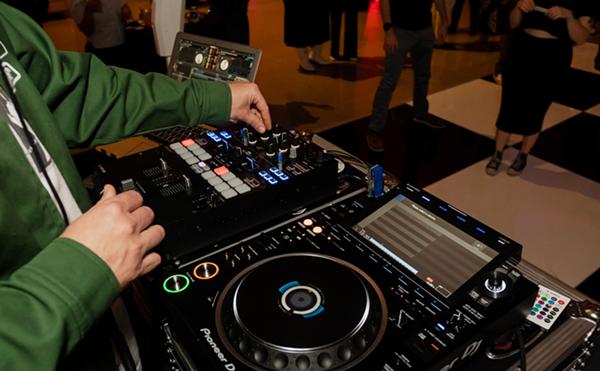"What I hope people gain from my work is a glimpse of beauty, and to engage in the mysteriousness of the unknown."
Shen Wei. Dancer. Choreographer. Painter. Art historian. Creator of the internationally lauded Shen Wei Dance Arts in New York City, and coming to Dallas' Winspear Opera House on Thursday, June 19, for a show that's not just about dance; it's painting coming to life.
Growing up in China in a family full of artists, he was thrust into the art world headfirst. His first foray: traditional Chinese opera and calligraphy. At the Hunan Arts School, he studied how theater, movement and music were intimately intertwined, a concept that would later infiltrate his performance aesthetic. When he was 16 years old, he became a full member of the Hunan Opera, but that wasn't his sole focus. In between performances, he studied painting and art history, becoming heavily engaged in the visual arts and creating paintings and taking photographs for local exhibitions.
But how did he find himself in the dance world? It was all because of his mother.
"Strangely enough, everything took a turn when, upon my mother's encouragement, I signed up for a dance competition and won first place," Shen says. "From that point on, my passion for dance solidified. I enrolled in the Guangdong Modern Dance Academy and became a founding member of the Guangdong Modern Dance Company when it was formed in 1991. Soon after I began choreographing."
As a choreographer, Shen is able to translate his academic background into understandable and relatable movement. He brings two-dimensional art into a three-dimensional world in a fresh way. It's so definitively original and fascinating that you quickly forget that you're watching people work. Instead, he cleverly creates a world in which you are transported inside of a work of art in complete motion.
Unfortunately, the Chinese authorities were unable to appreciate it, or his honesty and openness in exploring cultures that were unlike his own. He was making dances that were critical of his country's repressive politics and was befriending dancers and artists who were not approved of by the government. One pivotal moment that provoked his move to the United States occurred when he violated a taboo by being friendly with some visiting Taiwanese dancers. In the early 1990s in China, that was not OK. His living and work situation quickly became unsustainable, so he jumped at the chance to study with the Nikolais/Louis Dance Lab in Manhattan.
This was 1995, and young Shen packed up his life and moved to a foreign city with no family, no friends, and no clear idea of what he was going to do. He just knew that there was something about the Western world that was fascinating and inspiring.
"When China opened to the West at the beginning of the 1980s, I was able to access things I had never seen before. I remember reading a book about the Renaissance that struck me ... the Western concept of beauty, so different from the Chinese, left me fascinated. The three-dimensionality that was in Western painting was very different from the training I had in traditional Chinese calligraphy and painting."
But it was not his intention to start a dance company. He was in the United States to study dance and to perform; yet the pieces began to fall into place and they all serendipitously came together at the American Dance Festival (ADF) in 2000. Shen was one of three individuals chosen by the International Choreographers Commissioning Program to create a new choreographic work for ADF students selected by audition.
Those dancers became the founding members of his company, and with the support of Charles Reinhart, the director of ADF and a few other individuals, Shen Wei Dance Arts had its premiere in July 2001. That performance launched them into the stratosphere of dance, followed by performances at the Kennedy Center for the Performing Arts in Washington, D.C. and an international tour in their first year.
It was unprecedented, but Shen doesn't like to anything conventionally. Even when he returned home for the first time in 10 years, it wasn't just to say hello to his family, it was to create a piece for the 2008 Olympics in Beijing. The organizers of the opening ceremonies were interested in finding ways to present the fundamentals of Chinese philosophy and aesthetics in a different, more contemporary way. Shen was the epitome of that. His piece, "Scroll," celebrated the ancient Chinese tradition of calligraphy, or ink painting, and modern dance by pushing it to new boundaries by replacing the brush, or pen, with the human body to reconfigure how people view these art forms.
It worked. Not only did the performance have people talking: Who is Shen Wei? What did I just watch? Were those people painting with their bodies? What the hell just happened? It put Shen's work on a global scale and called attention to the cross-global communications and awareness that can be created with art. We might not always understand different cultures, but we can appreciate performance, and we can appreciate art. That's the beauty in the movement. And that's the beauty of dance.
"I believe dance will be one of the most popular art forms in the future," Shen says. "In our age of databases, smart phones and virtual networks, we are increasingly becoming estranged from our own bodies. We are searching for embodiment. Dance, as one of the most physically expressive forms, allows us to relieve the tension and rediscover ourselves, our human bodies. This is especially true for abstract movement."
What can we expect from his performance here in Dallas? Two pieces that couldn't be more different from each other, but work that is nonetheless painterly and an exploration of the human body. "Map," which was created in 2005, is a study in patterns and movement possibilities. Working with a few key movement concepts, such as rotation and bouncing, the dancers explore how these can expand into larger, more complex phrases, all the while engaging with Steve Reich's pulsing score, "The Desert Music." It is one of the most physically vigorous pieces in Shen's repertory.
"Near the Terrace," a piece he choreographed the summer he established his company, investigates surrealism. It is a slow-moving work that was inspired by a series of paintings by Belgian painter Paul Delvaux.
While Shen is familiar with Dallas, this performance will be his debut at the Winspear Opera House. It is also happening in conjunction with an exhibition of his paintings at the Crow Collection of Asian Art, running June 14 through September 29.
What the exhibition and the performance illustrate is how Shen's work is more than visual art, and more than performance art. The immersive integration of the two that he works so diligently toward results in a gesamtkunstwerk, a synthesis of the arts where creativity moves freely between mediums. Instead of conforming to a recognizable style, Shen's creations are unified by his sensitivity to the expressive possibilities of gesture, color, and shape. But they always come back to movement.
"Dance continues to intrigue me, because I am ever fascinated by the human body," he says. "There is so much unknown information, so many different kinds of emotions in physical movement. Every movement in nature is beautiful ... they create the structure for life. To investigate movement is to investigate vitality. For me, beautiful movement is as simple as a falling object."
Shen Wei Dance Arts will have it's Dallas debut at 8 p.m.Thursday, June 19, at the Winspear Opera House. Please note that one piece in this production contains some partial nudity.



